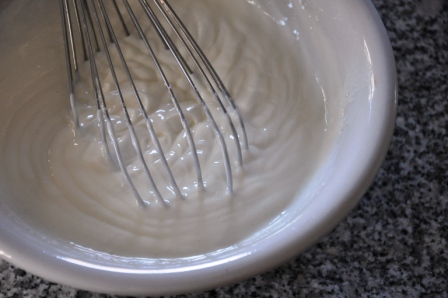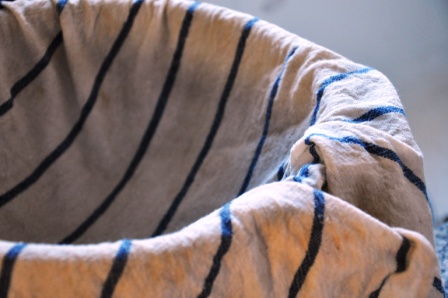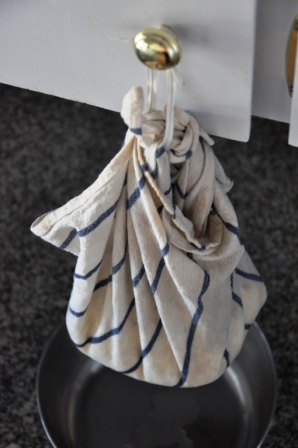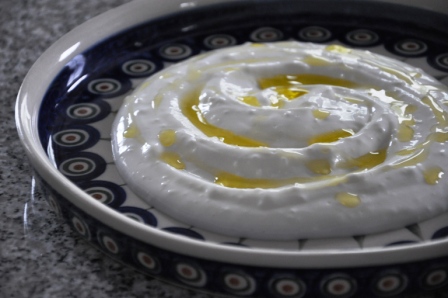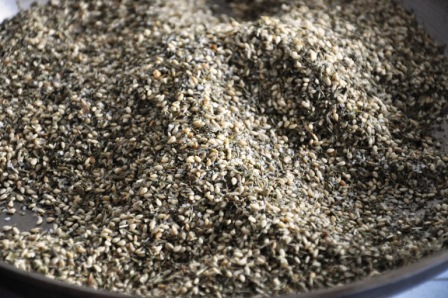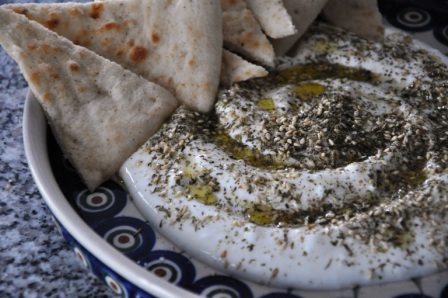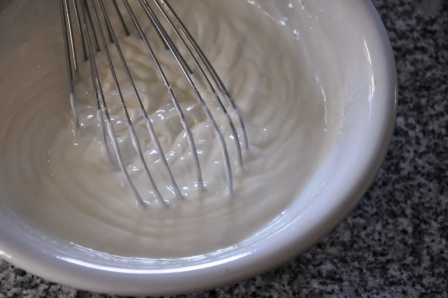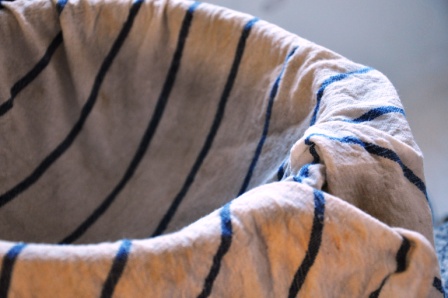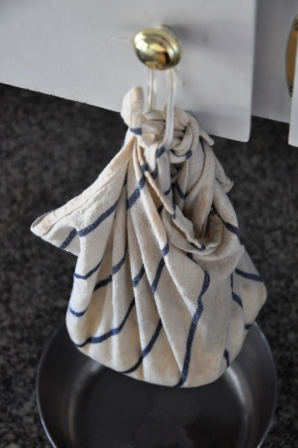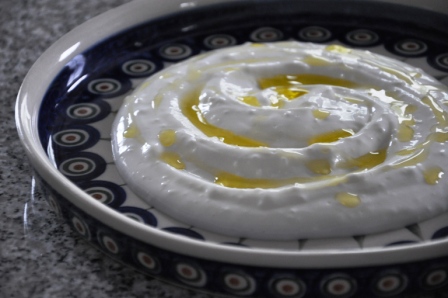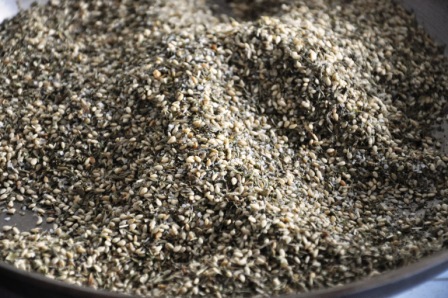It’s sunny today! It’s bright, beautiful, dare I say it…waaarrrmm (when you stand in direct sunlight for at least five minutes). So, Ameen and I have decided to seize the day (well, it could only be a few hours knowing our weather patterns) and clean the gutters! Wow that sounds way more exciting than it is. Flinging icy leaves, twigs, and decomposed organic matter from the rooftop isn’t exactly my favorite “new homeowner adventure”, but Ameen says it must be done.
Luckily I have a snack waiting for us inside. It’s labneh (also spelled lebneh, lebni labni, or just “yogurt cheese”), which is essentially yogurt strained at room temperature for 8-24 hours. This allows the excess whey to drain off and for the yogurt to become more complex in flavor. The resulting cheese is thick, smooth, rich and tangy and perfect for breakfast (with dried fruits and nuts), lunch (in a sandwich), or snack (with bread or pita chips). It is not dissimilar from Greek yogurt, the newly fashionable strained yogurt that is all the rage these days because of its high protein content.
Can you imagine, making your very own homemade cheese without buying copious amounts of milk, obscure ingredients (like rennet or citric acid), or having to wait to ages? It’s true! Just stir some salt into plain yogurt (whatever fat content you desire; I used low-fat, but full fat is best), pour it into cheesecloth (if you have some) or a tea towel (if you don’t), tie the towel together, and hang the yogurt for a day with a bowl underneath to collect the whey. A mere day later, homemade cheese is all yours.
According to Ameen (whose father is from Jordan), labneh is as ubiquitous to Middle Eastern children as peanut butter is to American children. It’s always available, nutritionally sound, and makes just about anything taste better. Traditionally, it’s served with olive oil, bread, and za’atar, a Middle Eastern spice blend. I did my best to recreate the za’atar with toasted sesame seeds, thyme, marjoram, oregano, sumac and salt; check out Taste of Beirut’s post here for even more info. I happen to love sumac. It has a pleasantly sour, astringent flavor that goes especially well with grilled meats and vegetables or in salad dressing, and makes the za’atar’s otherwise mild, herby flavor pop.
Well enough of my babbling, I should get back to gutter-cleaning and yard cleanup while I still can….I’m just so excited! At least there’s labneh with za’atar to look forward to later.
Labneh with Za’atar
Makes 2 cups labneh and about 1/3 cup za’atar
Plan on making the labneh at least 24 hours in advance of serving. Besides being served as an appetizer, labneh is delicious for breakfast or dessert with honey, dried fruit and nuts. It also makes a great sandwich spread and a lovely base for tzatziki sauce. The za’atar recipe can be doubled or quadrupled and be kept for up to two months in an airtight container. Look for sumac at Middle Eastern grocery stores (or HT Market in Seattle!) Try the za’atar as a rub on fish and chicken, or on steamed vegetables.
For the labneh:
1 16 ounce container low-fat or non-fat yogurt
2 teaspoons kosher salt
For the za’atar:
1 tablespoon dried marjoram
1 tablespoon dried oregano
1 tablespoon dried thyme
1 tablespoon sesame seeds
1 tablespoon sumac
2 teaspoons kosher salt
To serve:
2 tablespoons extra virgin olive oil
4 warmed pita breads, flat breads, 1 sliced baguette, chips or assorted crudités
Make the labneh: Whisk the yogurt and salt together. Line a colander with cheesecloth or a damp tea towel. Pour the yogurt into the colander, and bring the corners of the cheesecloth or towel together, then tie them in a knot. Hang the tied yogurt from a cabinet handle or faucet, with a bowl underneath to catch the whey. Let the yogurt drain for 24 hours at room temperature. Scrape the thickened yogurt into a bowl and whisk until smooth and refrigerate until ready to serve or up to one week.
Make the za’atar: In a dry skillet, toast the herbs over medium heat until fragrant, about 2-3 minutes, then spread on a plate to cool. Toast the sesame seeds in the same skillet until golden brown and fragrant, about 3-4 minutes. Grind the herbs in a spice grinder until very fine, then mix with the cooled toasted sesame seeds, sumac and salt.
To serve: Spread the labneh on a serving platter and drizzle with the olive oil and za’atar. Serve with the warmed pita breads, flat breads, baguette slices, chips, or assorted crudités.
